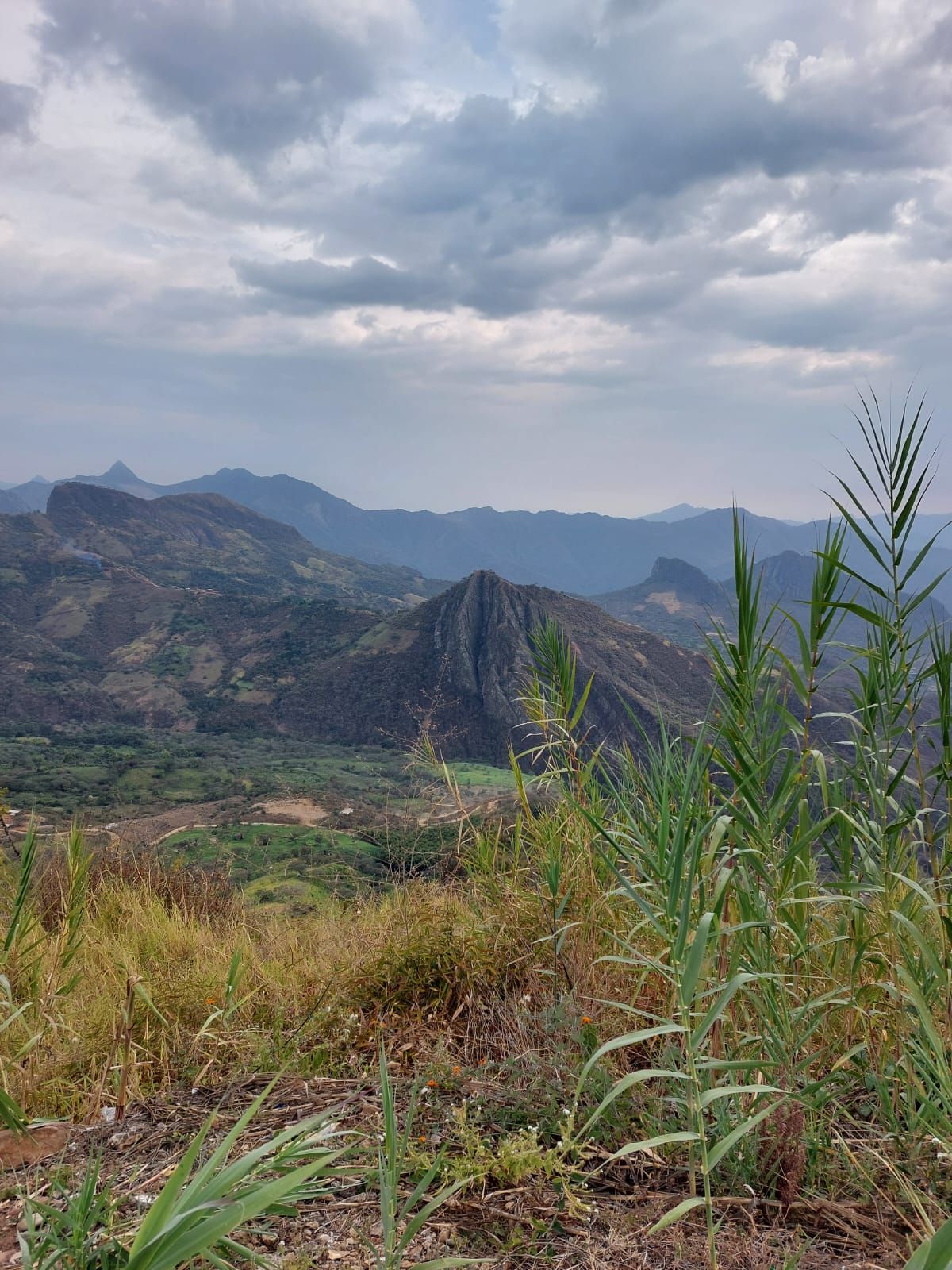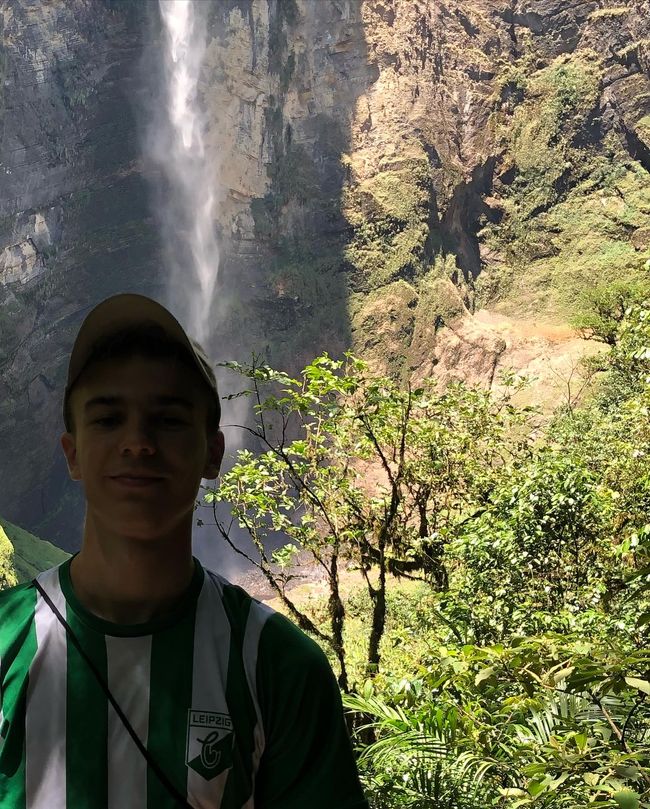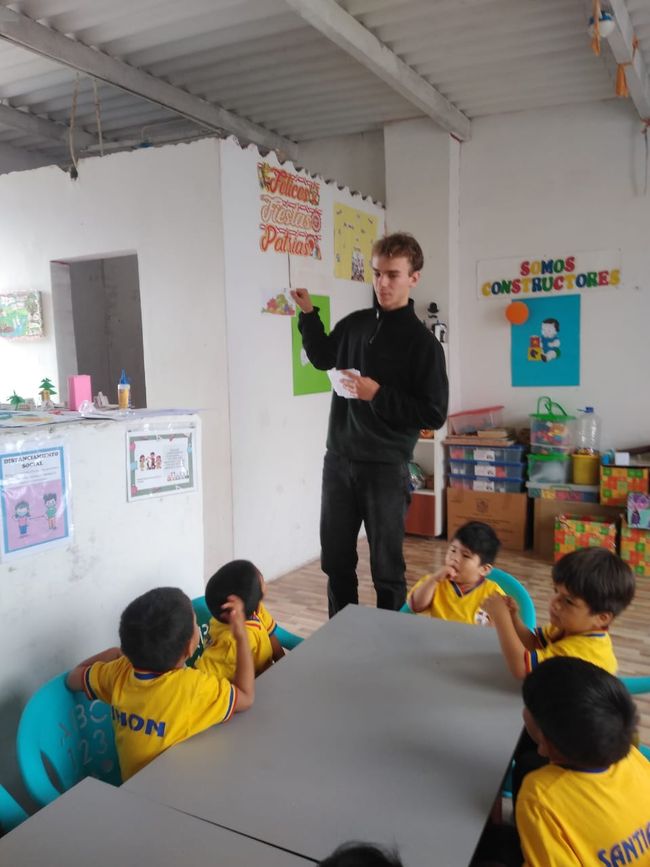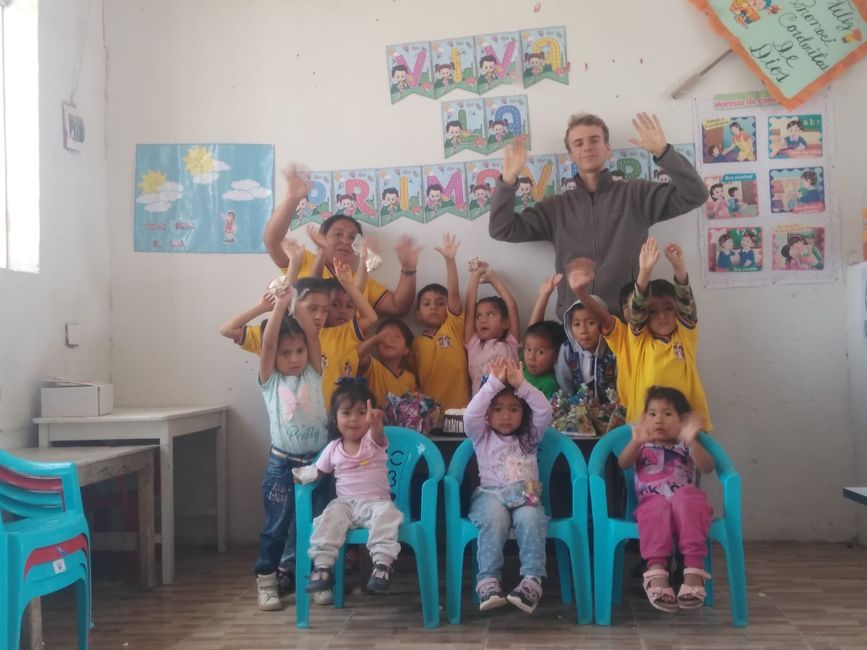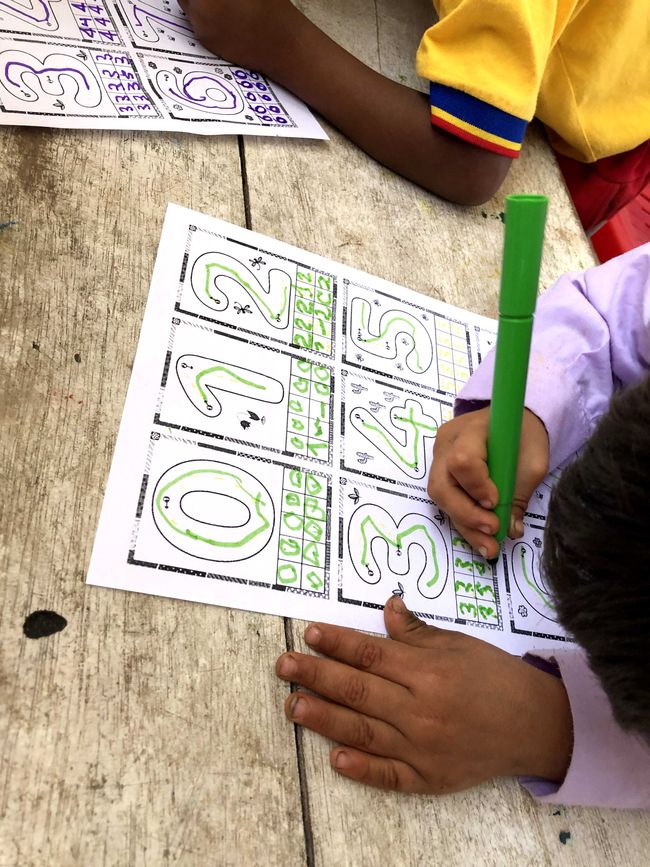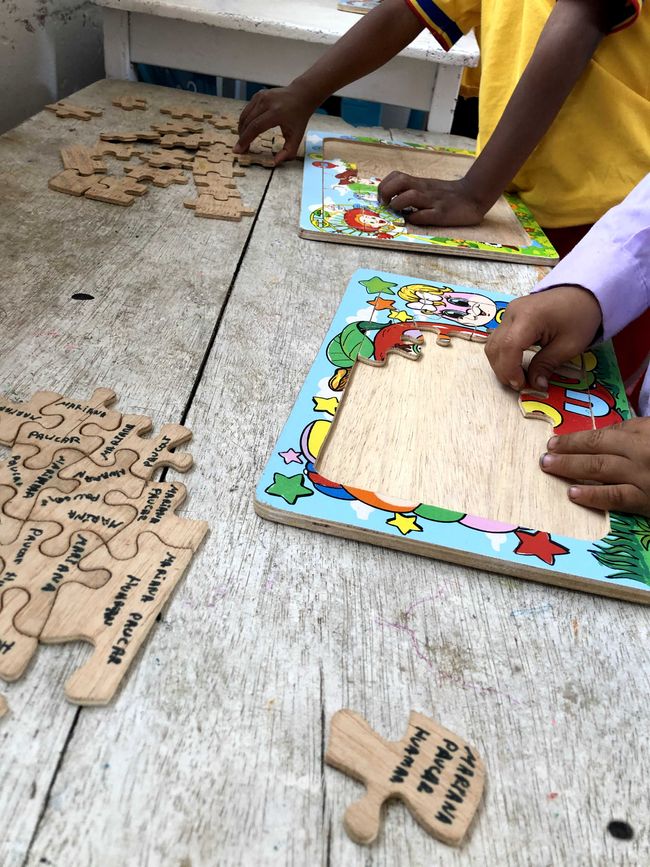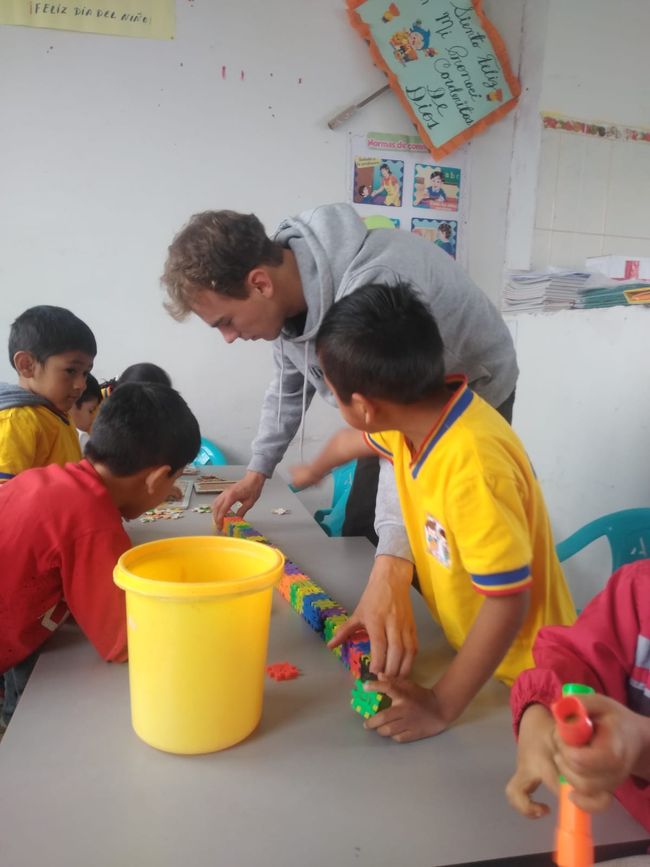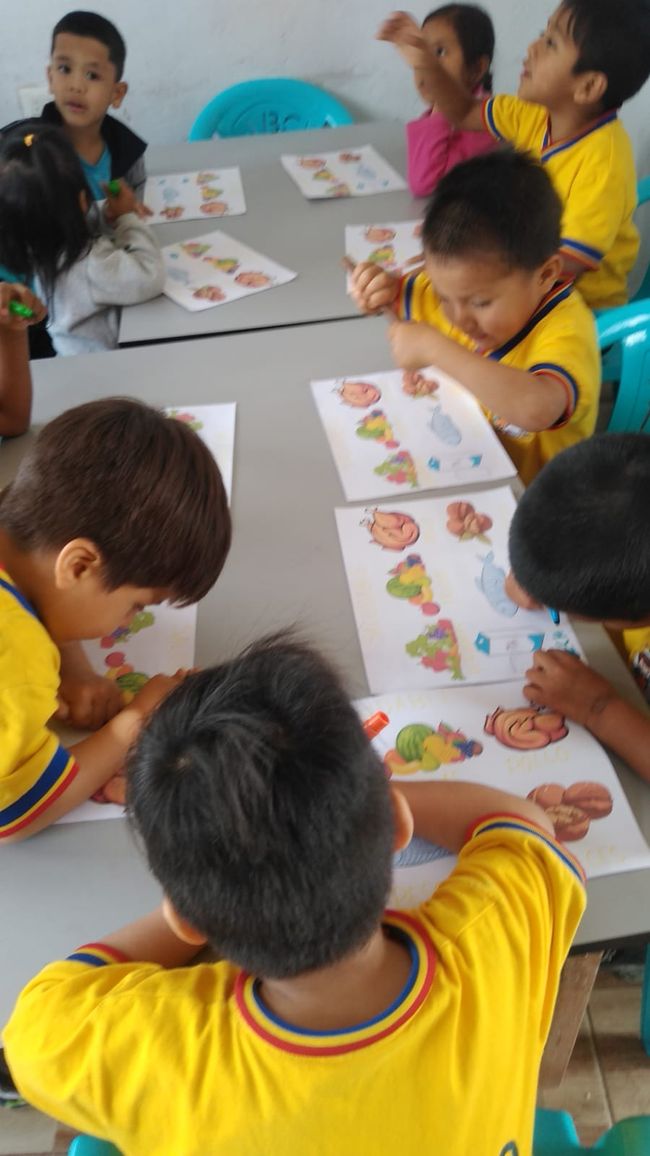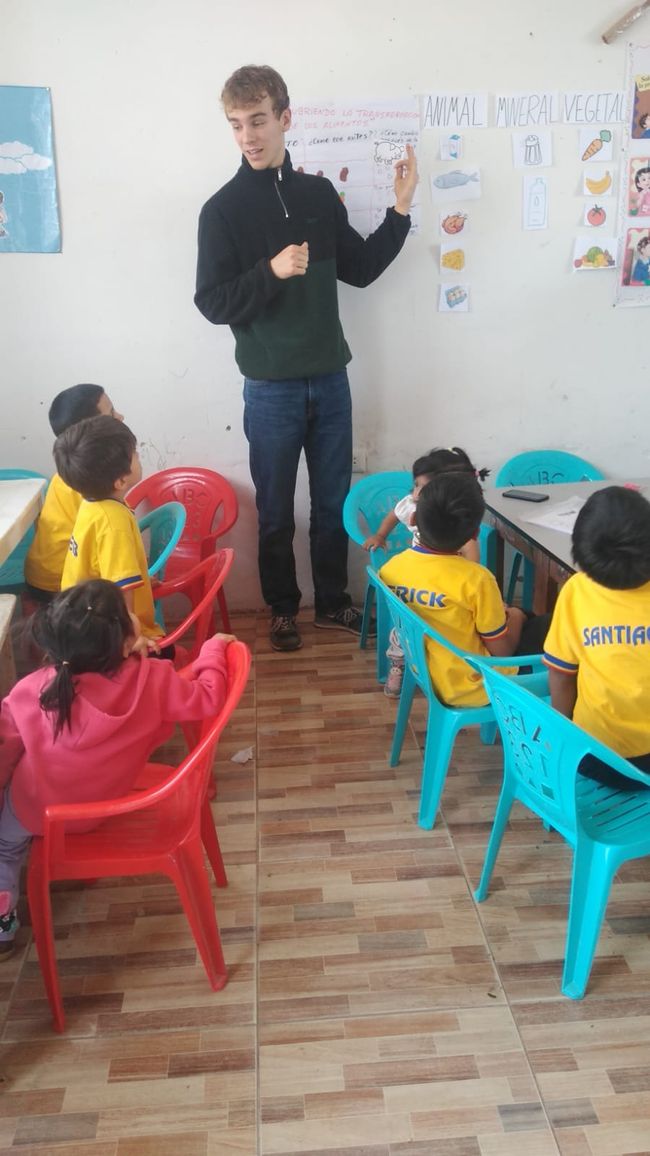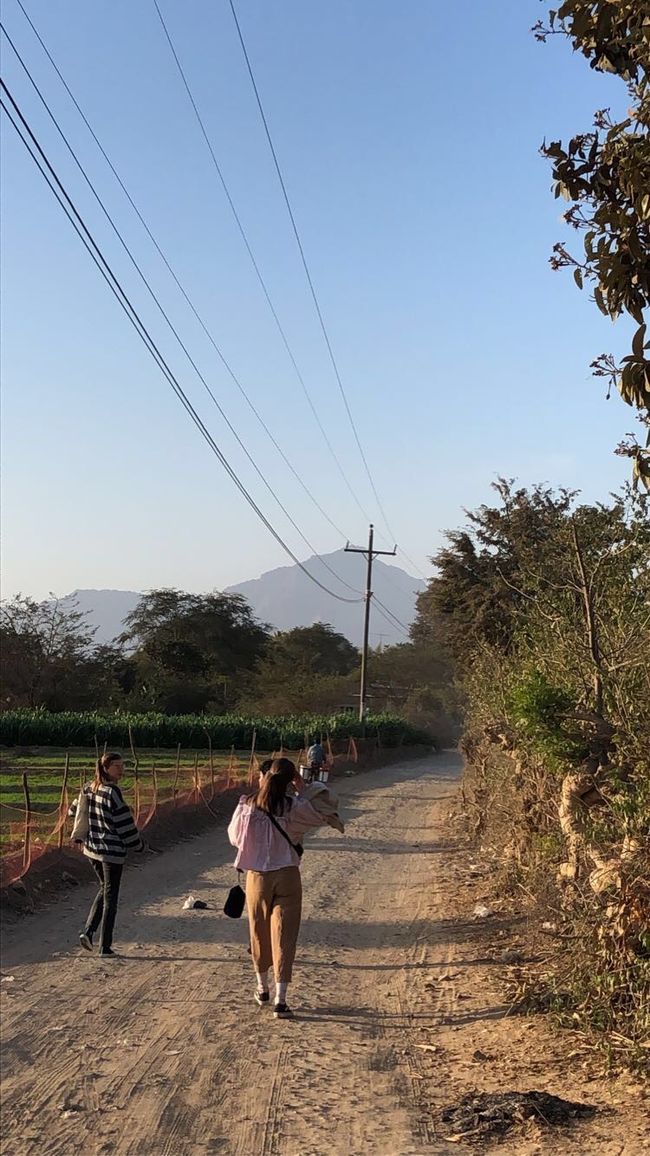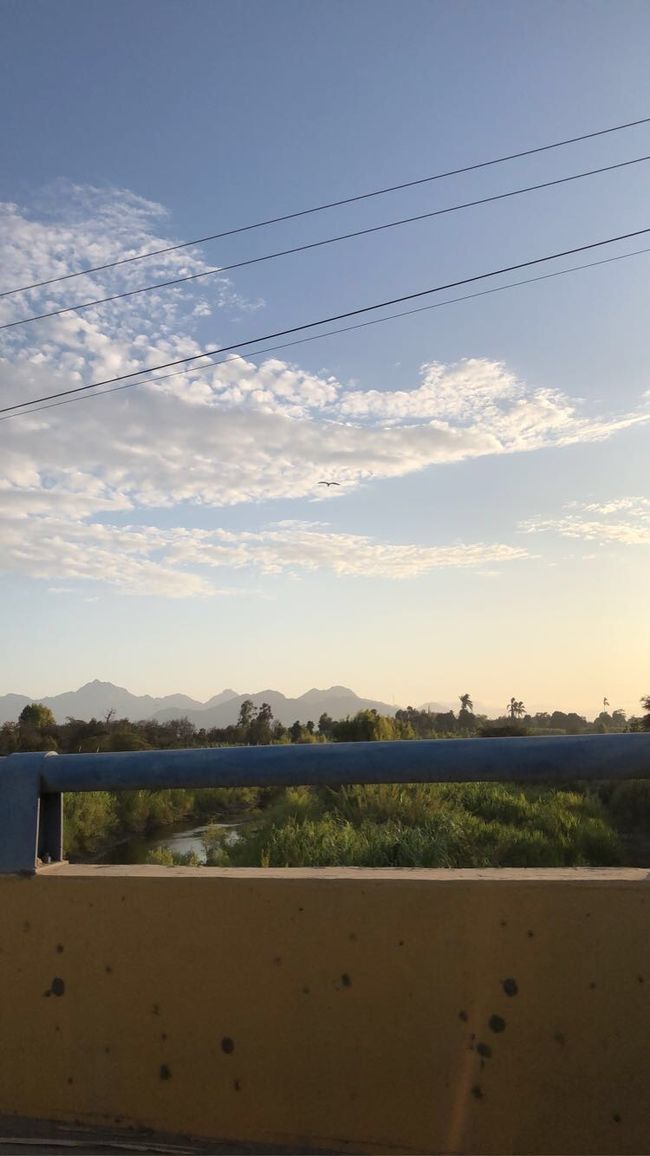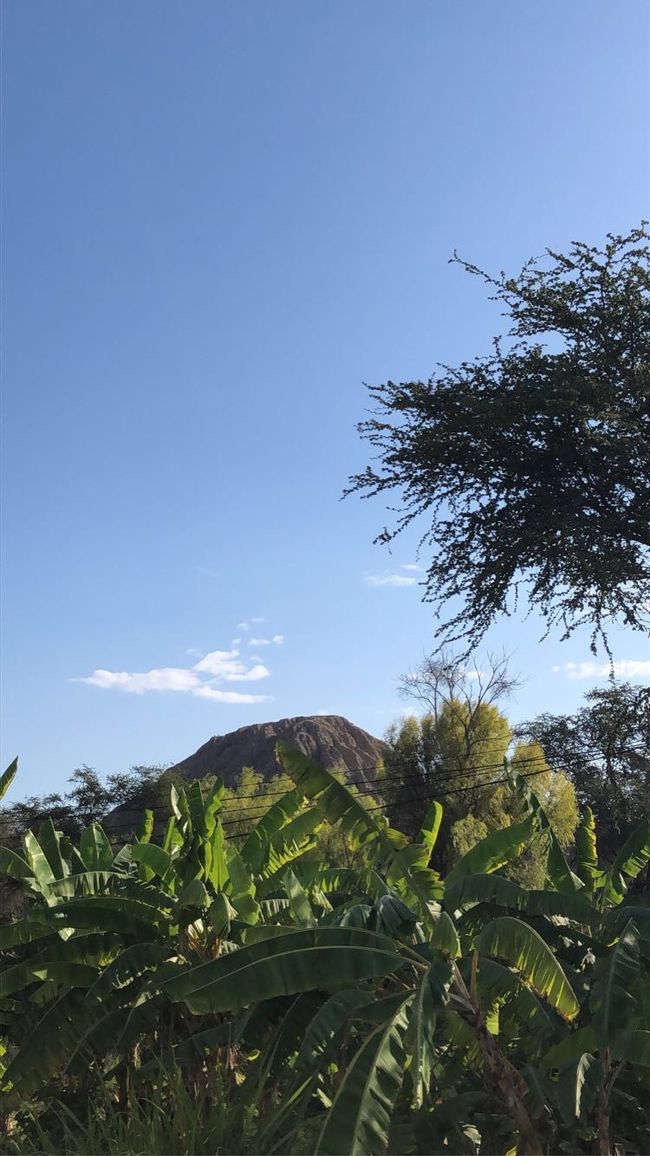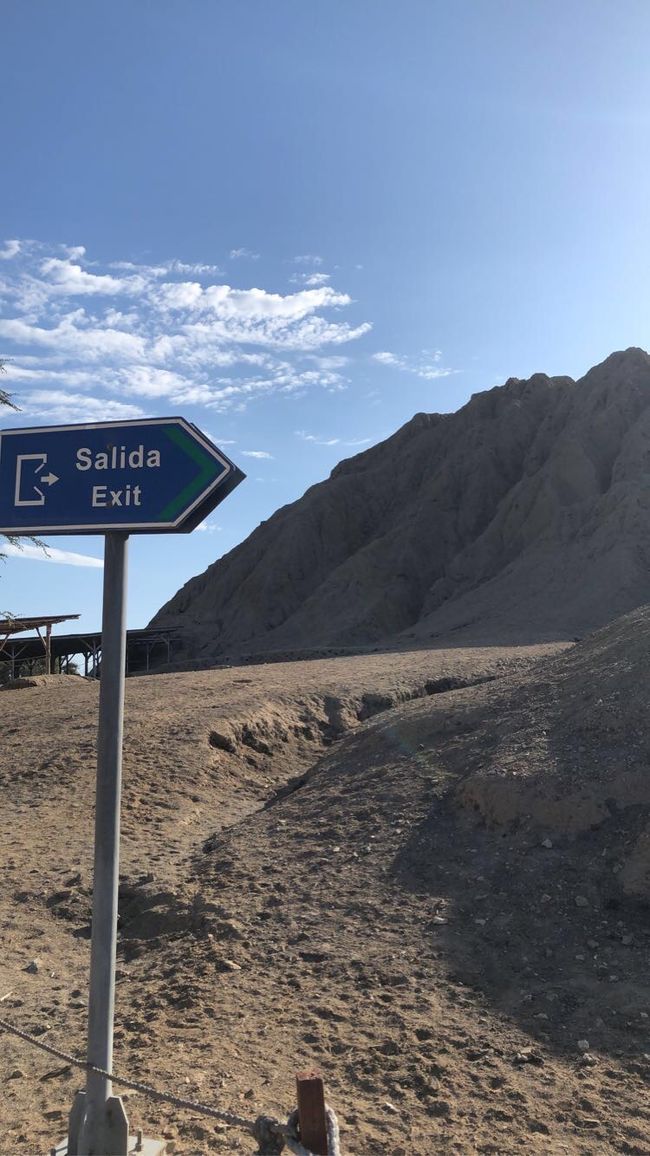Four weeks of project work
Gepubliceerd: 08.10.2022
Abonneren op de nieuwsbrief
At the time of my last blog post, I didn't have a fixed project and my daily life here in Chiclayo was just starting. All of this is very different now. I have been working in my project for four weeks, I have three Spanish lessons per week, and my daily life is now in full swing.
Let's start with my project, as this will probably be one of the most important things for the whole year here, and I would like to share my first experiences. I work in a "Pronoei", which is a facility for children aged 3-6. The concept is similar to a preschool. The children have free play time, but there are also daily lessons. The "Pronoeis" are mainly located in poorer areas. The goal of the "Pronoeis" is to give children from poorer neighborhoods the opportunity to prepare for school. This is intended to prevent a significant gap between children when they start school. In addition, parents are relieved because kindergartens are mostly only available in isolated locations and are often private, making them unaffordable for many parents.
The "Pronoeis" mostly consist of a larger room and there is only one group with one teacher/caretaker, unlike the typical German kindergarten with many small groups. My group consists of 17 children, although usually about 13 children are present. Almost all the children live very close to the facility, and half of them even live in the same street. Although street is the wrong word here. As mentioned before, the Pronoei is located in a poorer area, so there are no paved streets, the houses are more like huts consisting of one or two rooms, covered with corrugated iron roofs and directly connected to each other. From my impression, many families have about 3-4 children, so it often happens that two streets are already enough to fill one Pronoei. Of course, this also means that the "Pronoeis" cannot accommodate all children by far.
My Pronoei is open from 8-12:30, so not as long, but I am always very tired afterwards and wonder how a teacher/caretaker can work for 8 hours a day. One reason for my tiredness is certainly the fact that I have to think in Spanish all the time, which was very difficult at the beginning. But I will come back to the language later.
A typical day begins with the children arriving one by one and having free play time. However, there is not much space and no opportunity to play outside. For me, this was a big difference compared to my own experiences in kindergarten/after-school care. Because back then, I spent most of my time outdoors and we often played games that required a lot of space (soccer, tag, hide-and-seek, etc.).
However, even here, the children can come up with game ideas with the few possibilities that they really enjoy. There are also some play materials available to the children. These are often connected to a small learning background. One of the main activities is puzzles, which indirectly teach the children about geometric shapes, train their memory, and above all strengthen their concentration. I was impressed by this and didn't think that there would already be such big differences in the puzzles' pace among children of the same age. When doing puzzles, my main focus is to help the children maintain their concentration. Because often they start to stare into space and quickly get lost in their thoughts.
There are also many other small games that are connected to colors and numbers, so that the children can learn some basics while playing.
After about an hour, we clean up together so that everyone has space to eat and drink during the breakfast break. Before that, we sing 2-3 songs together and pray. Then each child unpacks their breakfast, which for most consists of a small package of cookies and a sweet juice. Occasionally, there are also rolls or fruit.
After eating, the work block begins. Often, there is an overarching theme for one to two weeks. So far, we have covered food and colors. I always try to choose a subtopic at home and bring appropriate worksheets and coloring pages. For example, yesterday we dealt with the question of how to differentiate between the origins of food. I briefly read a small text at the beginning and then showed the children photos of food, which they then assigned to the three groups "Plant", "Animal", and "Mineral". At home, I created a matching worksheet on which the children had to match and color the food, and then practice writing the words. Of course, at their young age, they cannot write the words themselves yet, but they traced the pre-written words with a black pencil.
This is roughly how each day goes; there are always small thematic blocks that we work on together with the children, and at the beginning and end of the day, they also have free play time.
I really enjoy the work, I quickly settled in, and due to the smaller facility, I was able to learn a lot and gain experience quickly. However, at the beginning, the language barrier was clearly noticeable. Both communication with the teacher/caretaker and communication with the children were initially based on individual words and gestures. Now it's going much better, and I can have a proper conversation and explain topics to the children in Spanish. Of course, I also use the internet to research individual words beforehand, but I think there is already progress.
So, my conclusion after the first 4 weeks is very positive. I find it impressive how the teacher/caretaker takes care of so many children alone, as even with two people, it is sometimes very exhausting for me to address all the children's wishes and questions. But I am happy that I can help her a little during this year. Even if I may not be the biggest help due to the language barrier, I still think I can contribute and she has already told me that she is really grateful for that. This is motivating, and at the same time, I am very grateful that she has given me the opportunity to work with her because it also brings me many new experiences.
As mentioned before, my Spanish course is also running now. Until the beginning of November, we have lessons three times a week. This is also a lot of fun, especially because there are only three of us, so we can talk a lot. There are already small improvements, but I think there is still a lot to learn.
I also go on small trips with the other volunteers from time to time, and I spend a lot of time with my host family, with whom I still get along very well. So, there isn't much time left for other activities, also because I currently need a nap after work, and then the Spanish course often starts. However, for example, I have already played soccer with a group and I will also try to get to know a few more people locally soon. Next week is vacation, and maybe we will go on another little trip.
The text has already become quite long now. So, I will end it here and will write again later (I will try to write a little something every month :)
Abonneren op de nieuwsbrief
Antwoord

Reisverslagen Peru
